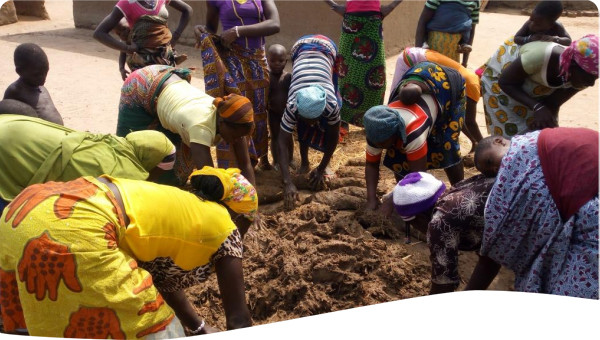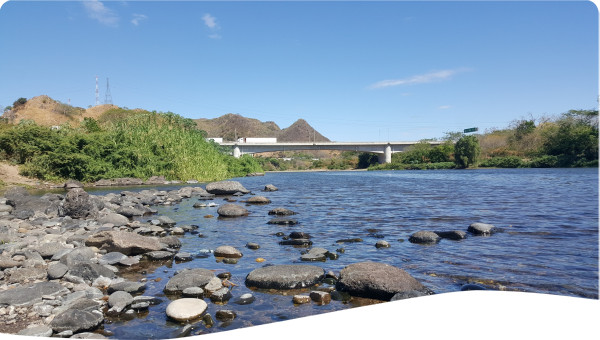 Tool -
Tool -
The type of agreement underpinning transboundary organisations varies greatly around the world, from ad hoc arrangements, memoranda of understanding, to formal international treaties and agreements. These instruments commonly follow international water law principles (Tool A2.02). Depending on their constituent agreement between riparian states, transboundary water organisations could be grouped into the following types (Hooper and Lloyd, 2011): (1) advisory committees; (2) association; (3) authorities; (4) commissions.
It is clear that the effective functioning of transboundary organisations requires a secure funding base (Tool D2), the political will of governments, the commitment of the partners who create them, and other actors that may be involved in the process. Many donors are keen to financially support the international committees when firm, efficient, and transparent agreements among riparian countries are in place. The financing costs for transboundary organisations may vary significantly depending on the mandate, structure and the level of development of riparian countries (GWP & GEF IW:Learn, 2020).
In 1960s-1980s many transboundary basin organisations were established with support from external sources (Joyce and Granit, 2010), but with few exceptions most of them remained at emerging stages in terms of achievements for transboundary cooperation. Negative factors are low political commitment, poorly defined goals, insufficient mandate and decreasing donor support. There are however numerous exceptions, including Senegal River Development Organisation and Lesotho Highland Development Project, where cooperative efforts produced significant transboundary benefits for energy, bulk water supply and irrigation.
Transboundary water management studies have shown that nowadays most active cooperation appears in the Nile, the Volta and the Mekong river basins due to the strong institutional capacity of transboundary basin organisation. Looking at regional distribution of transboundary river organisations: Africa hosts the highest number of TRBOs (18 organisations), followed by Europe (10), South America (6), Asia (6) and North America (4) (Kim and Glaumann, 2012).
Traditionally, transboundary organisations have been set up to address a given problem (e.g. navigation, sedimentation, pollution) but their remit can be, and often has been, expanded to tackle wider water problems in the basin. Typical functions of transboundary organisations can be divided into the following categories (Gerlak and Schmeier, 2016):
- Advising and coordinating application of joint agreement by member states;
- Executing direct mandate of the organisation (data management, monitoring and alerting, planning and programming etc);
- Assessing and controlling the implementation of joint agreement (incl. dispute settlement function).
Within these categories transboundary organisations would normally perform functions which are supplementary to actions performed by each riparian countries, following an institutional analysis. Such analysis facilitates political agreement among riparians and solidifies organisational mandate. As set forth by the Water Convention (Art.9, UNECE Water Convention, 1992), transboundary basin organisations are expected to perform such functions as:
- Collecting, compiling and evaluating data to identify pollution sources that generate a cross border impact;
- Developing joint monitoring programmes on the quality and quantity of the resource;
- Developing inventories and exchange of information on pollution sources that generate a cross-border impact;
- Establishing emission limits for wastewater and evaluating the effectiveness of control programmes;
- Jointly defining quality criteria and objectives and the proposed measures to maintain and, if necessary, improve water quality;
- Developing joint action plans to reduce polluting loads from accidental pollution and diffuse pollution;
- Establishing alert procedures;
- Providing a forum for information exchange on existing and planned uses of the resource and related facilities, which generate a cross-border impact;
- Promoting cooperation and information exchange on best available technologies and fostering cooperation in scientific research programmes;
- Participating in the environmental impact assessment of transboundary waters, in accordance with the relevant international rules.
While most of the functions of transboundary organisations address surface waters, it is important to also include transboundary aquifers within the organisation’s mandate even if the transboundary river basin and aquifer area do not correspond to each other. Such broad mandate will facilitate avoiding overlapping functions at a later stage of transboundary cooperation (Hooper and Lloyd, 2011).
An IWRM approach requires that human resources and institutional capacity in transboundary structures are able to address social issues, as well as environmental and economic development imperatives. While governments in each country often wish to retain ultimate responsibility for decisions, it can be helpful to establish consultative body to broaden the range of stakeholder involvement. This is important in course of developing, for instance, climate change adaptation and mitigation strategies (Tool A1.03), as well as SDG and 2030 Agenda policies (Tools A1).
Examples of some noteworthy transboundary water institutions include:
- Nile Basin Initiative (NBI) – intergovernmental partnership among 10 riparian states of the Nile river basin, aiming to develop the river in a cooperative manner. Established in 1999, NBI became a powerful forum for discussion, creating and sharing common knowledge, as well as robust support mechanism for project preparation. The NBI acts through its Secretariat and two subsidiary organisations - Nile Equatorial Lakes Subsidiary Action Program Coordination Unit (NELSAP-CU) and the Eastern Nile Technical Regional Office (ENTRO) for Eastern Nile Subsidiary Action Program, with a focus on regional investments and capacity building.
- Mekong River Commission (MRC) – intergovernmental institutions of four riparian states of the lower Mekong basin (Cambodia, Lao PDR, Thailand and Viet Nam). The MRC is established based on the agreement signed by the four countries in 1995, and consists of three permanent bodies: the Council, Joint Committee and the MRC Secretariat. National Mekong Committees are established in each member country and act as the key focal point for liaison with the MRC Secretariat and coordination with national ministries and line agencies. The MRC largely focuses on economic development in early stages since its establishments, giving less attention to transboundary impacts. Currently MRC’s mandate extends to managing policy, technical and administrative matter of basin management with a holistic programme approach (Basin Development Strategy 2021-2030 and MRC Strategic Plan 2021-2025).
- Volta Basin Authority (VBA) - joint transboundary organisation of 6 riparian states in the Volta river basin for management of shared water resources. Created in 2005, VBA provided for discussion on key issues in the basin and reconciliation of national challenges through regional approaches. Since its establishment VBA has contributed to operationalising basin-wide information system and decentralized institutional framework on national levels. The Authority is guided by the Code of Conduct on decision-making and action, implementing joint programmes through its Transboundary Committee (GWP-SA, 2014).
- International Commission for the Protection of Danube River (ICPDR) – transnational body which was created in 1998 for implementation of Danube River Protection Convention and brings together delegations of 15 Contracting Parties. It has also allowed for other organisations to join their work via a special procedure – expert groups, composed from national experts from among Contracting Parties and the ICPDR observers. Each expert group is supported by a technical expert from Secretariat, allowing ICPDR to work in a decentralised way. Since 2000 ICPDR has been prioritising implementation of transboundary impacts of EU Water Framework Directive in the Danube river basin, as well as EU Floods Directive (since 2007). Some of major achievements from ICPDR’s work include operationalising several transboundary monitoring instruments – Accident Emergency Warning System, Transnational Monitoring Network (Case Study) and Information System ‘Danubis’. These instruments allow the Commission to act as coordinating platform and solve multilateral issues at international and basin-wide level, having the fullest picture of existing water challenges. ICPDR also works to improve marine environment that is connected from the river, through an MoU with the Commission for the Protection of the Black Sea.
- Senegal River Basin Development Organisation (OMVS) – regional cooperation body of the Senegal river basin, including four riparian countries. Established in 1972 as a response to devastating long-term drought, OMVS focuses on implementation of equitable sharing principle among member states by managing basin water infrastructure and generated benefits (f.e. OMVS-managed infrastructure provides 100% of potable water in Nouakchott and Saint Louis, and 60% in Dakar). Having full support of its member states by aligning its goals with national policies, OMVS ensures its financial stability and thus carries out projects which are both technical feasible and politically supported despite geopolitical differences in the region. Some successful examples of cooperation include joint partnership with World Bank within Senegal River-Basin Multi-Purpose Water Resources Development Project (PGIRE).
Here are some key common sets of challenges faced by transboundary organisations:
- Competition over water uses and among water users: Transboundary organisations in their mandate aim to achieve basin economic, social and environmental objectives besides balancing competing water uses and users (Schmeier and Shubber, 2018). Considering rising human demands for water in agriculture, industry and drinking water supply, basin management experiences higher pressure on its governance structures from bigger number of actors engaged (private sector, financing institutions, diplomatic and military bodies etc) as well as expansion of its domain (covering water risk assessment for investment purposes or addressing water conflicts). These waters can also create intricate diplomatic challenges that often link states in asymmetric upstream/downstream relationships.
- Large projects & wicked problems: Transboundary cooperation becomes especially complicated and sensitive when dealing with issues of large-scale national infrastructure projects, such as irrigation schemes, waterways, hydroelectric dams, and bridge constructions (Kim and Glaumann, 2012). The very nature of such projects can have drastic impacts on the shared body of water and thus may cause severe environmental and socio-economic disruption in other riparian countries. In those cases, transboundary organisations for water resource management have shown to be one of the best negotiation platforms (Petersen-Perlman, Veilleux and Wolf, 2017).
- Developing a shared vision: To develop the essential confidence to enable transboundary water resource management and collaboration, parties need to build and accept common data sets and knowledge about the water resource issues (Tool B4.01) and share visions (Tool C2.02) about the future of the resource. However, different countries view water bodies in different ways and getting to a shared vision is exactly where the bulk of the challenge resides. Even though a conflict is more likely to occur where there is neither an institution nor an agreement defining rights and responsibilities regarding shared watercourse, a mere existence of a joint institution does not imply effective cooperation (Petersen-Perlman, Veilleux and Wolf, 2017).
- Translating a vision into concrete action: When a transboundary RBO is established, demonstrating that riparian countries have reached shared vision and a certain level of understanding, challenges remain with its implementation and abilities to carry out projects. Once established, transboundary water management needs to move beyond visions, and develop additional mechanisms, such as regulatory mechanisms, data and information sharing protocols, and financing mechanisms to put transboundary water management firmly on the ground, where technical secretariats prove to play essential role (Schmeier, 2010).
- Output legitimacy: Another important concept relevant for institutional capacity is output legitimacy, i.e. effectiveness of policy outcomes for people (Scharf, 1999). In case of transboundary organisations, their actions gain legitimacy on the basis of constituent agreements entered by the riparians. Assessing legitimacy of a transboundary organisation in terms of inputs and outputs is essential for it to act as a safe environment for a dialogue over contentious issues. Achieving output legitimacy could be facilitated in several ways, starting from establishing robust data and information exchange agreements and networks among the basin states (Huitema and Meijerink, 2017). Without advanced data sharing protocols, it would be extremely difficult to carry out joint modelling and planning, a key precondition for successful institutional arrangement for transboundary water governance. Another consequence of poor information sharing strategy would be weak public engagement or even lack of awareness among basin residents about the transboundary RBO activities. Even though public engagement might not be directly sought by the riparian states, it greatly undermines the output legitimacy for a transboundary organisation by failing to account for local or traditional knowledge (Morris and De Loë, 2016).
- Monitoring and enforcement: Effectiveness of a transboundary organisation is defined not only by the terms of its constituent agreement but also by its ability to implement the terms in practice. Therefore such institution must be a confident enforcement authority, using formal monitoring mechanisms to prompt timely enforcement actions in response to potential non-compliance of riparians (Xie, Rahaman and Shen, 2018). One of such mechanisms could be use of collected information to alert the stakeholders on consequences of non-compliance. Provided that transboundary RBO has a wider mandate, applying formalized procedures for enforcement (f.e. through a compliance committee) would also facilitate political acceptability of sanctions and retaliatory measures to address violations of transboundary agreement.





